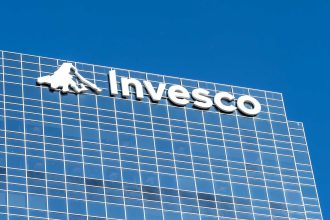Talk about a comeback story.
After enduring the biggest rout since the 2008 financial crisis in 2022, technology stocks have led the U.S. market to a spectacular turnaround in the first half of this year. The recovery has the Nasdaq-100, which tracks the top 100 stocks traded on the Nasdaq Exchange, on track for its best first-half performance on record.
What’s more, the Nasdaq Composite, a broader gauge that includes all stocks trading on the Nasdaq, is headed for its best first-half since 1986, according to Dow Jones Market Data.
The upswing can be attributed to stock-price gains for some of the largest U.S.-traded companies in the technology space, companies like Nvidia Corp.
NVDA,
Apple Inc.
AAPL,
and others that shouldered the early brunt of the Federal Reserve’s aggressive pace of interest-rate hikes. The Nasdaq-100 is on track to finish the first half with a gain of roughly 37%, while the Nasdaq Composite is up roughly 30%, FactSet data show.
After the collapse of Silicon Valley Bank in Mach, investors rushed into megacap technology stocks like Apple, the most valuable U.S.-traded company based on its market capitalization of nearly $3 trillion. Buyers were drawn to stable cash flows and fortress balance sheets, analysts said.
It was followed by the artificial intelligence boom that benefited Microsoft Corp. Alphabet Inc. and chip making giant Nvidia Corp.
NVDA,
Nvidia, perhaps the biggest beneficiary of the AI boom, has risen more than 180% since the start of the year, bringing its market cap to just over $1.03 trillion, FactSet data show.
The torrid gains of a select few megacap leaders spawned a new Wall Street sobriquet: the “Magnificent Seven.”
In addition to Apple, Nvidia and Microsoft, the other members of this group include Alphabet Inc.’s Class A
GOOGL,
and Class C
GOOG,
shares, Tesla Inc.
TSLA,
Amazon.com Inc.
AMZN,
Meta Platforms Inc.
META,
Combined, these stocks are responsible for more than 55% of the increase in the aggregate value of the S&P 500
SPX,
year-to-date, according to FactSet data. The S&P 500
SPX,
has risen more than 14% so far this year.
Surprising rally of 2023
The robust gains this year took Wall Street by surprise. Tech stocks finished 2022 in sorry shape, with the Nasdaq Composite logging its lowest closing level of the year in late December, driven down by a wave of tax-loss selling, FactSet data show. Many Wall Street strategists expected the selling to continue in the first half of 2023, or until a long-anticipated recession would push the Fed to reverse course and start cutting interest rates again.
But circumstances shifted more quickly than many investors expected, with tech stocks roaring back in the opening weeks of the year, a classic example of what Steve Sosnick, chief market strategist at Interactive Brokers, described as the “January effect.”
The rally deepened as first-quarter corporate earnings came in better than feared, while the artificial intelligence craze blossomed. Many investors who had stayed in cash or held short positions gave up, opting to chase the rally higher, Sosnick said. That the anticipated recession has yet to arrive further emboldened market bulls.
“The fact that the Nasdaq took off during the first half of this year during a rising rate environment took everyone by surprise,” said Art Hogan, chief market strategist at B.Riley Wealth Management.
“Clearly, the growth stocks missed the memo and raced ahead, especially during the second quarter as the artificial intelligence boom fueled a manic attempt to predict who the winners would be,” he added.
To be sure, the Nasdaq rally also benefited from smaller technology names like C3.ai Inc.,
AI,
that like Nvidia rode the artificial intelligence boom. C3, a Nasdaq component, is up 217% year-to-date, according to FactSet data.
Earnings test on deck
With a strong first-half performance, tech stocks are finishing June with lofty valuations reminiscent of the days before the Fed started hiking rates to try to curb inflation.
The forward price-to-earnings (P/E) ratio for the Nasdaq Composite has risen to 27.5 as of Wednesday, according to FactSet. That is well below the roughly 33 P/E ratio from November 2021, when the index hit its record highs. The Nasdaq-100 has exhibited a similar pattern.
Many market strategists have complained about the market’s overreliance on the top technology names this year, referring to the phenomenon as “bad breadth,” a reference to the notion that the market’s gains were hinged dangerously to a narrow band of stocks.
But after trailing tech all year, previously unloved corners of the market have suddenly sprung to life in June. The Russell 2000
RUT,
a gauge of small-cap stocks, is on track to outperform the Nasdaq Composite for the month. It is up 6.2% to the Nasdaq’s 5.1%. Meanwhile, the S&P 500 industrials sector is up 9.2%, while the materials sector is up 8.4%, according to FactSet data.
See: Why stock-market bulls see small-caps shaking off bank worries to take rally baton
Some analysts see signs that the 2023 rally is finally starting to broaden, which could mean that more gains for the major indexes lie ahead. But even if small-caps and cyclical names continue to climb, a reversal of the “Magnificent Seven” cohort would likely more than offset strength in other areas, analysts said.
“While you don’t need tech stocks to double for the rally to continue, you do need them not to collapse,” Hogan added.
A make-or-break moment for the Nasdaq’s rally could arrive when companies begin reporting earnings in July. If profits disappoint, investors might start to rethink whether tech stocks’ deserve their lofty valuations, especially with the Federal Reserve planning to raise interest rates a few more times in the months ahead.
“A lot of this rally was driven by multiple expansion,” Interactive Broker’s Sosnick said, referencing the notion that the artificial intelligence boom has boosted expected earnings for Nvidia, Microsoft and Alphabet, among others. “We’ll see what happens in three weeks when second-quarter earnings start rolling in.”
They’ve already experienced some weakness last week as the Nasdaq Composite snapped its best streak of weekly gains since 2019, FactSet data show, More recently, the Nasdaq shrugged off early losses on Wednesday to finish higher with a 0.3% gain, the only one of the three main U.S. equity indexes to do so.
The S&P 500, meanwhile, finished marginally lower, while the Dow Jones Industrial Average
DJIA,
shed 74 points, or 0.2%, to 33,852.66.
Read the full article here



